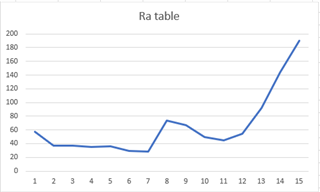Other Parts Discussed in Thread: GPCRB, GPCRA0
Tool/software:
Hi,I used the BQ40Z50-r2 module on a 2S1P battery pack and found that the SOC calculation for a single full charge discharge was accurate. However, when I discharged the fully charged battery to about 20% SOC, I stopped discharging and let it sit for more than 18 hours before discharging again. I found that the SOC would jump to 0. I tested three batteries and found that they jumped to 0 at 9%, 7%, and 8%, respectively. After checking the logs, it was found that the full charge capacity FCC also jumped by about 200mAh after jumping to 0. It seems that the FCC estimation error occurred during the static process. Please help me confirm what the problem is. Attached is my. gg.csv configuration file



